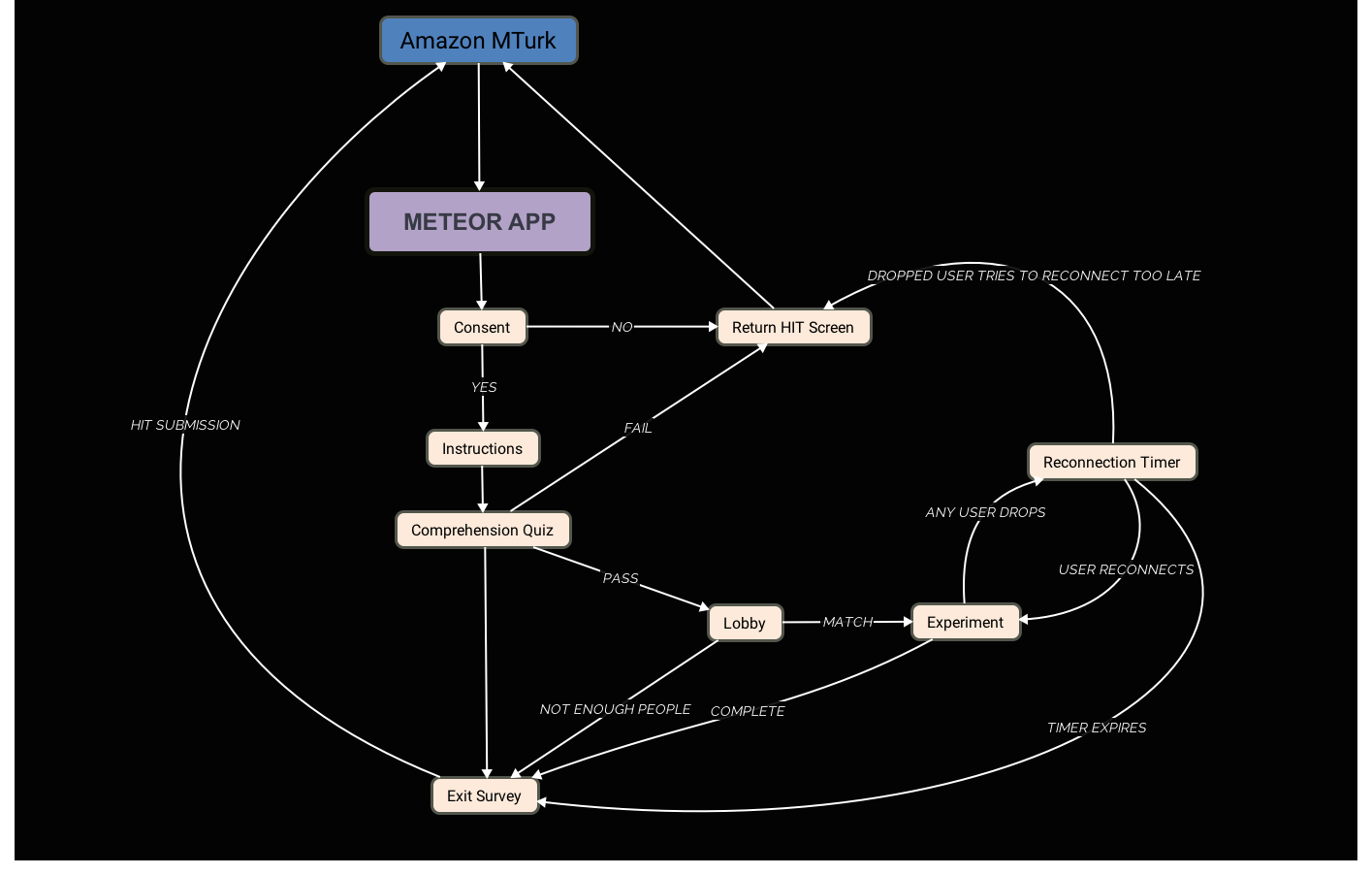Design Overview¶
Typical Workflow using TurkServer¶
At a broad level, using TurkServer looks something like the following once you’ve done a literature review and settled on a research question.
- Prototype your experiment in a standalone Meteor app, designed aroundthe smallest unit of people who will interact. This could even be a single
user, but the point is to take advantage of Meteor’s ease of development to
investigate whether your experiment makes sense. Here are some examples:
- In an experiment on teamwork, one unit was a team of people working together.
- In a prisoner’s dilemma experiment with random rematching among a hundred people, one unit was two players in a repeated game.
- If the design is promising, add TurkServer to your app, and integrate with its assignment mechanism, which will allow you to make different instances of your prototype world and control how participants enter and leave them.
- Test, debug, and pilot your experiment extensively, making sure that your code works as intended and your instructions are easy to. Start with your research team, then others in your lab/department, and finally run a pilot with real crowdsourcing workers. Experiments inevitably involve many redesigns and modifications, and it’s better to do this in testing than to shoot from the hip.
- Run your experiment!
- Share the source code of your app so others can look at your experiment protocol, and replicate or build on it.
Designing Good Experiments¶
While TurkServer provides much of the software components necessary for deploying web-based experiments, many elements of your experiment design are important to ensure that your study goes smoothly and workers leave happy.
In particular, when doing experiments that require coordinating 2 or more users at once, there are a number of important considerations for experimental design that affect how well you can collect data when your app is live. Consider the following “state diagram” (credit: Eshin Jolly) that illustrates possible conditions a user passes through as they participate in a group task:

Among other things, the diagram illustrates:
- A matching mechanism to group people together as they are waiting in the lobby.
- Providing good instructions and using a comprehension task to check that they are understood.
- Accounting for the possibility of disconnection and dropout in your design, both to minimize the amount of data that might be discarded and ensure a good experience for all remaining participants.
See also the following topics:
- Constructing a one-way mirror to qualitatively observe activity and diagnose potential issues.
- How to debug and test your app before running it live.
- Helpful packages and software that you may want to use in your app.
- Other frequently asked questions about building experiments.